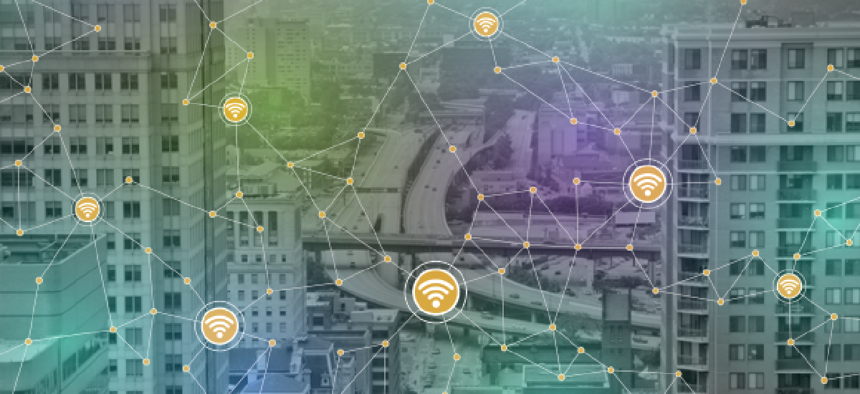Cities explore environmental sensor networks

Baltimore and Lafayette, La., won $40,000 in seed money from the EPA for their plans to build systems to measure and manage environmental sensor data.
Johns Hopkins University graduate student Anna Scott has been leading a project to create a network of 300 environmental sensors around Baltimore to better monitor ozone and nitrogen dioxide. She was considering adding more sensors when she learned about the Environmental Protection Agency’s Smart City Air Challenge, a competition that would fund installation of hundreds of air quality sensors and help cities share the data with the public. Her peers at Johns Hopkins helped Scott design the sensor housing and a scalable cloud platform for data management that they proposed to the EPA. In December, Scott’s project, along with another in Lafayette, La., won $40,000 in seed money.
Ethan McMahon, an information management specialist for EPA’s Office of Environmental Information, said the goal of the competition was to see how different localities would stand up the sensor networks, data management and transparency aspects of the projects.
This is still an emerging field, McMahon said. Cities like Chicago and Chattanooga,Tenn., have implemented environmental sensing networks, but no one has determined the gold standard for how Internet of Things-based environmental networks are constructed, he said. The Array of Things nodes in Chicago are set up to transmit data to a secure central database server at Argonne National Laboratory, from where it can be accessed. In Chattanooga, streaming data from IoT sensors is supported by the city’s ultra-high-speed network. Those setups work well for their respective projects, he said, but commercial cloud service providers will be vying to deliver platforms as environmental monitoring, and other IoT networking, expands.
These competing attempts play out in the different systems being proposed in Baltimore and Lafayette. Baltimore will be using Amazon Web Services and its IoT device gateway for data management and storage. Lafayette will be using Microsoft Azure cloud and the Apache Cassandra distributed database management system.
William LaBar, a vice president with CGI Federal, one of the partners in the Lafayette plan, said that the data management systems aren’t just keeping track of environmental levels. They also provide data that place those numbers in a larger context: sensor location, sensor type, the last time the sensor was calibrated.
Lafayette plans to formally announce its project early in 2017 and establish a timeline for when the sensor network will be rolled out. Once the plan is in place, LaBar said he expects to be able to set up 250 sensors in six months. Baltimore will start assembling its sensors with public volunteers and student interns in February. It wants to have 50 sensors operational by May for testing and have the full network deployed by July 2017.
Networks of sensors have the potential to impact the way we understand localized environments, Scott said. No longer will city air quality be based on a couple EPA sensors, but a network of sensors in diverse locations. The data these networks bring in will help to “expand the type of questions that scientists can ask,” she said.





